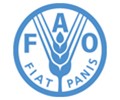FAO food price index increased in April

The size of the benchmark for world food commodity prices increased in April, driven by a higher quote for the main cereal, meat and milk products, the UN Food and Agriculture Organization (FAO) reported on Friday.
The FAO food price index, which tracks the monthly changes in an international price of a series of food commodities that are traded globally, on average 128.3 points in April, rose 1.0 percent from March and 7.6 percent from the same month last year.
The FAO cereal price index increased 1.2 percent from March. The price of global wheat is slightly rising, supported by tightening supply that can be exported at the Russian Federation, while the price index of all FAO rice rises at stronger demand for fragrant varieties.
The price of international corn rises because of the tighter stock level in the United States. Currency fluctuations affect price movements in the world market, while adjusting tariff policies increases market uncertainty.
The FAO meat price index rose 3.2 percent in April compared to March, with a quote rising in all categories of meat, led by pork. The price of bovine meat also strengthened, especially in Australia and Brazil, amidst the demand for stable global imports and limited export availability.
The FAO milk price index increased 2.4 percent in April from the previous month to establish as much as 22.9 percent higher than the previous year. This increase was led by the price of international butter, which reached the highest of all time due to a decline in inventory in Europe.
Conversely, the FAO vegetable oil price index decreased 2.3 percent, although it remained 20.7 percent higher than last year’s level. The price of palm oil dropped due to higher seasonal output in the main -producing countries in Southeast Asia, while global soybeans and rapese oil prices rose behind the requests of strong global imports. The price of sunflower oil is mostly stable.

August 6, 2022, Tabarka, Tunisia – Mohamed Ali Ghaidi prepared cheese in his laboratory.
The FAO sugar price index also dropped 3.5 percent from March, most of the concerns about the uncertain global economic prospects and potential impacts on demand from drinks and the food processing sector, which together explained that most of the consumption of global sugar.
Offers and Requests for Cereal in the coming year
The FAO also released a new Brief Supply and Request for Cereal on Friday, with an estimated revised for 2024 and new insights on planting conditions and prospects for 2025.
FAO’s latest forecast for 2025 wheat production is pegged at 795 million tons, equivalent to the previous year. Prospects show record output in Asia, supported by India and Pakistan, improve conditions in southern Europe and North Africa, along with stable production in Canada and Russian federation. However, the deficit of rainfall in Northern and East Europe and drought fears in the United States considers the overall prospects.
Harvesting of crude seed plants 2025 begins in the southern hemisphere, with corn output which is expected to increase in Brazil and South Africa. In the northern hemisphere, initial expectations showed 5 percent expansion in planting rough seeds in the United States.
Meanwhile, the FAO has revised its estimates for global cereal production in 2024 to 2 848 million tons, even when global rice output in 2024/25 is likely to develop by 1.5 percent to reach the highest record of 543.6 million tons.
The new FAO forecast for the utilization of world cereals in 2024/25 was established at 2 870 million tons, an increase of 1.0 percent during the 2023/24 level, driven by the hope of the use of feed higher than corn in China and the Russian federation, along with an increase in rice consumption in various African countries.
World cereal shares are now expected to decrease by 1.9 percent to 868.2 million tons at the close of the 2025 season, reduce the estimated FAO for the world cereal stock ratio used in 2024/25 to 29.9 percent-still considered to be in a comfortable buffer zone.
FAO has slightly reduced estimates for world cereal trade in 2024/25 to 478.6 million tons, which will mark a contraction of 6.8 percent from 2023/24 and the lowest level since 2019/20. Global trade in rough seeds is expected to contract faster, mostly because of lower demand than China and smaller corn supply in Brazil. International trade in rice is now seen increasing by 1.2 percent to the highest record of only 60.4 million tons.
The Agricultural Market Information System (Amis), organized by the FAO, also issued its monthly market monitor on Friday. In addition to regular market analysis, this new problem includes features articles that examine the fertilizer and global trade markets, which have been influenced by a number of geopolitical factors in recent years and are ready to face increased uncertainty due to the growing trade policy landscape.
Source: FAO
